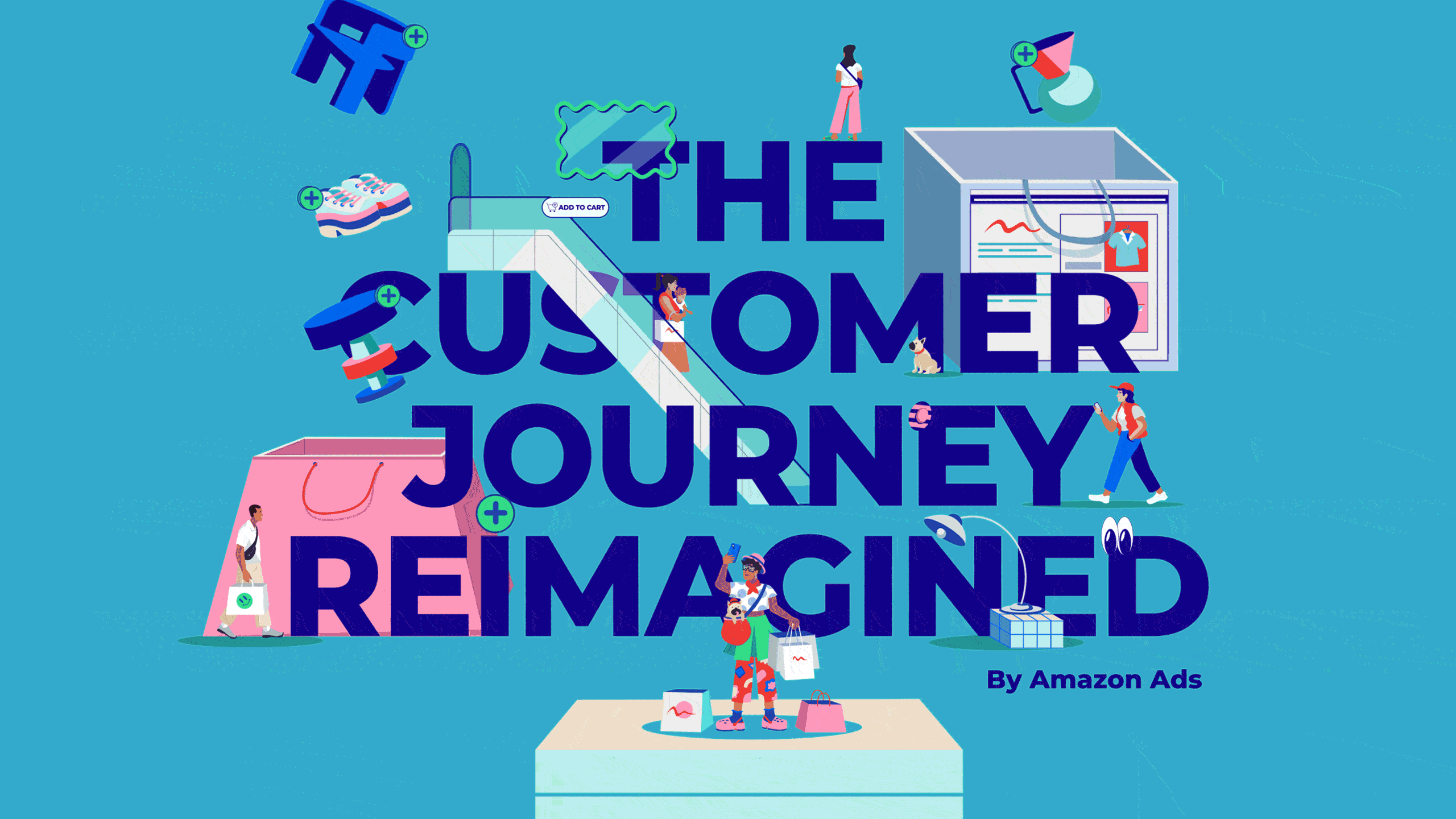
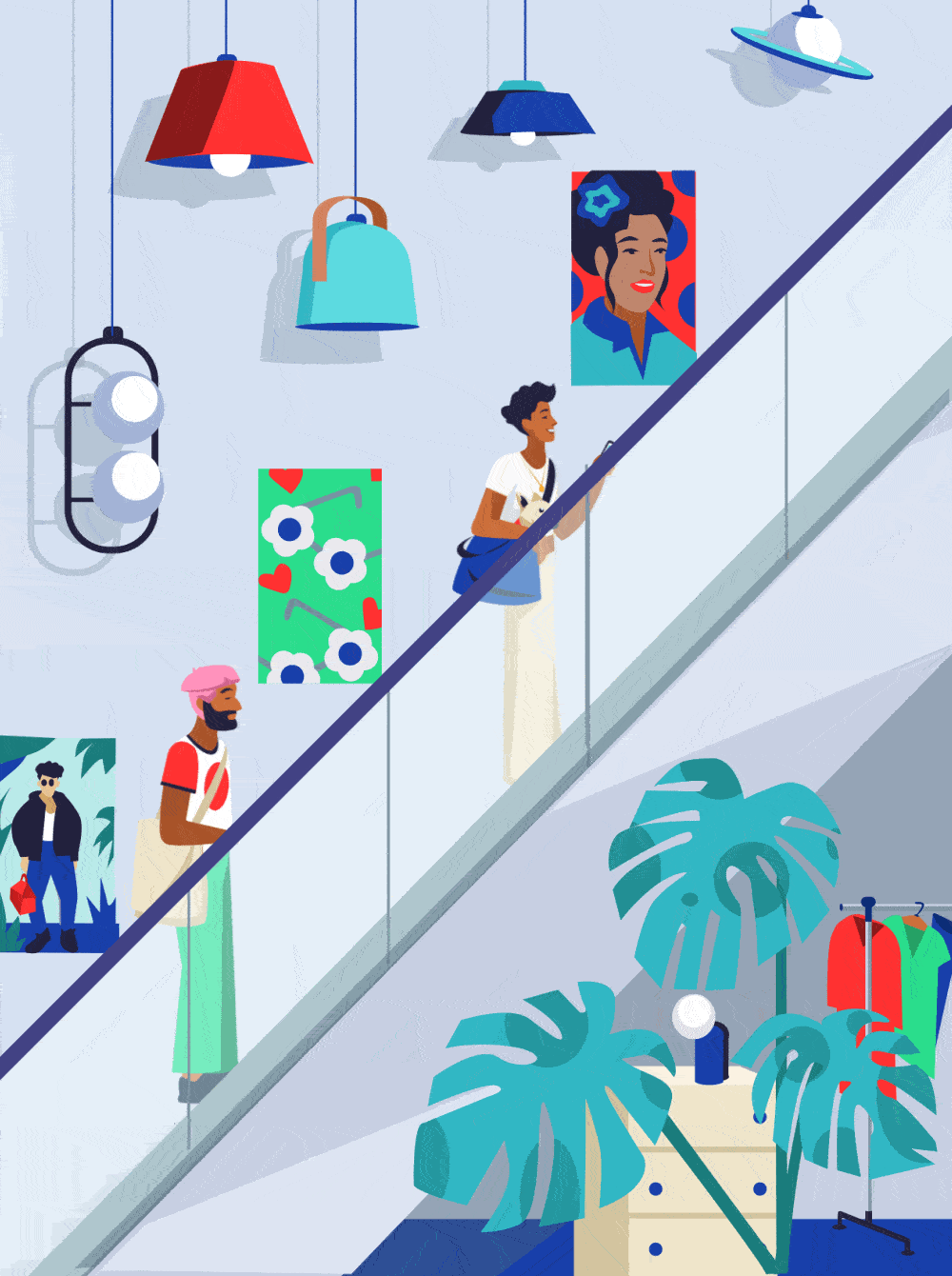
Here’s the customer journey as a textbook might imagine it: A consumer sees an ad, becomes interested in the product being promoted, weighs the various benefits, and goes to a store or website to buy it. If only it were that straightforward and predictable.
Instead, customers might hear about a product through friends, a livestreaming series, a social media influencer, or a podcast long before they see an ad for it. They might research it online, read customer reviews, and visit a store to look at it, but not buy it right away. Maybe they’ll wind up coming back to the store, or maybe they’ll decide to order it online instead. That’s just one example in a veritable multiverse of nonlinear customer journeys, happening every day.
Research from eMarketer bears this out. While 31% of consumers who found a product in-store bought it right away, even more (33%) first looked up a product online, and nearly 22% talked to family or friends first.
Even their sources for getting information online can vary greatly. PwC’s latest “Voice of the Consumer” research shows that 41% of purchases are influenced by social media, but 70% of people are also looking up reviews online.
Now factor in all the time consumers spend streaming movies, music, TV shows, and even their favorite social influencers, including ad-supported services that could inspire their next purchase. They consume this content all day long, which means their awareness, consideration, and buying intent develops the way it might when they pass a neighborhood store every day for a week before deciding to go inside.
The evolution of these nonlinear journeys makes the map look a lot messier for brands. Being successful takes the strategic use of tools and data to orchestrate campaigns that bring their messages to life across all these touchpoints and paths. You may not always know exactly where audiences will journey next, but you need to be prepared to go along for the ride.

Here’s the customer journey as a textbook might imagine it: A consumer sees an ad, becomes interested in the product being promoted, weighs the various benefits, and goes to a store or website to buy it. If only it were that straightforward and predictable.
Instead, customers might hear about a product through friends, a livestreaming series, a social media influencer, or a podcast long before they see an ad for it. They might research it online, read customer reviews, and visit a store to look at it, but not buy it right away. Maybe they’ll wind up coming back to the store, or maybe they’ll decide to order it online instead. That’s just one example in a veritable multiverse of nonlinear customer journeys, happening every day.
Research from eMarketer bears this out. While 31% of consumers who found a product in-store bought it right away, even more (33%) first looked up a product online, and nearly 22% talked to family or friends first.
Even their sources for getting information online can vary greatly. PwC’s latest “Voice of the Consumer” research shows that 41% of purchases are influenced by social media, but 70% of people are also looking up reviews online.
Now factor in all the time consumers spend streaming movies, music, TV shows, and even their favorite social influencers, including ad-supported services that could inspire their next purchase. They consume this content all day long, which means their awareness, consideration, and buying intent develops the way it might when they pass a neighborhood store every day for a week before deciding to go inside.
The evolution of these nonlinear journeys makes the map look a lot messier for brands. Being successful takes the strategic use of tools and data to orchestrate campaigns that bring their messages to life across all these touchpoints and paths. You may not always know exactly where audiences will journey next, but you need to be prepared to go along for the ride.
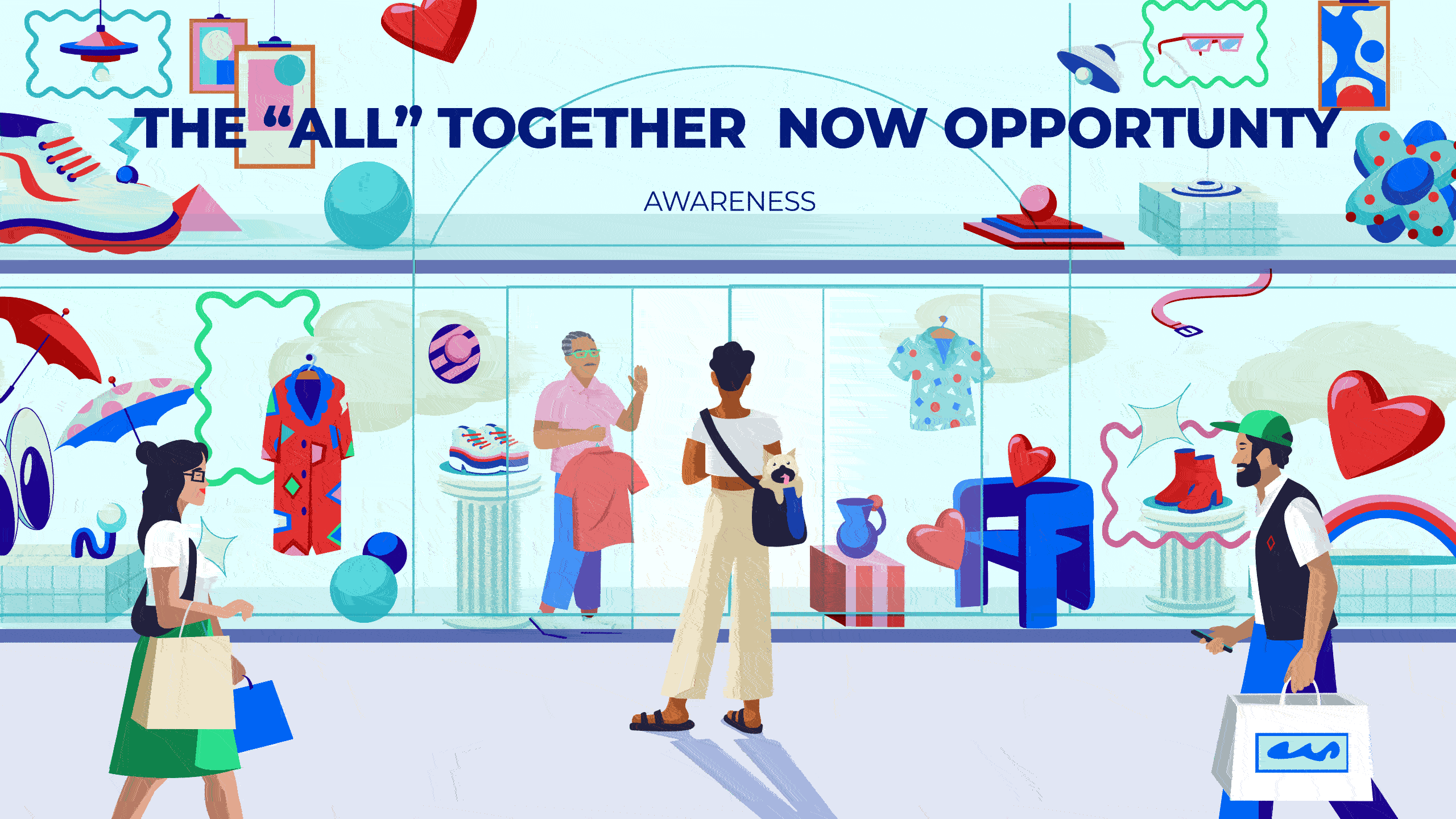
Reimagining the customer journey begins by recognizing it’s not so much about people getting from point A to point B—it’s a process of wandering in and out of buying cycles throughout their daily lives.
A person may not start out with a quest to buy charcuterie boards, for example. Instead, they might spot one in a social post by a creator they admire. Later, they might watch a movie on a streaming service and take note of a charcuterie board a character serves at a dinner party. That’s when they might notice ads for charcuterie boards. Only then might the real research begin.
The journey often starts with the awareness of a need rather than the discovery of a product. Awareness also doesn’t always mean brand-new awareness. Consumers may need to deepen their existing understanding of a brand’s products, vision, and values as the relationship grows.
In a sense, the classic marketing rule of seven—that it takes seven exposures to a message for consumers to take action—still applies. The trick is in where and how you show up during each of those moments. Make sure your message reaches across all the different places your customers are visiting and channels they’re engaging with.

Take stock of your end-to-end
customer experience
Creating memorable touchpoints in the early phases of a buying cycle can be critical to connecting future brand loyalists with your brand’s story. Consider connecting with people in their living rooms or on personal devices while they are consuming entertainment content. Amazon streaming TV or display ads can help kickstart these strategies and reach audiences on the Amazon Store, streaming services like Twitch or Freevee, or on a collection of high-quality third-party sites and apps.
Get more granular with your
awareness goals
The transition from awareness to consideration can vary by audience, and some audiences will be more valuable to you than others. Setting granular awareness goals can help you identify those higher value audiences and develop tactics to reach them. Amazon Ads offers goal-based campaigns, powered by billions of aggregated data points to help refine and optimize your results. Do you want your campaign to optimize for customers who are new to your brand? Grow your overall brand impression share? Maximize your audience reach? You can incorporate all of those elements into your overall strategy.
Connect and build momentum
with impactful creative formats
Think of an ad that was especially memorable to you. Where did you see it? What format was it in? Was it static or moving? Dynamic creative can help showcase your brand in powerful ways, and formats like video ads are no longer out of reach for businesses of any size. You can even incorporate QR codes and links into streaming TV ads that will help guide viewers to your digital properties, increasing the speed from awareness to purchase.
Reimagining the customer journey begins by recognizing it’s not so much about people getting from point A to point B—it’s a process of wandering in and out of buying cycles throughout their daily lives.
A person may not start out with a quest to buy charcuterie boards, for example. Instead, they might spot one in a social post by a creator they admire. Later, they might watch a movie on a streaming service and take note of a charcuterie board a character serves at a dinner party. That’s when they might notice ads for charcuterie boards. Only then might the real research begin.
The journey often starts with the awareness of a need rather than the discovery of a product. Awareness also doesn’t always mean brand-new awareness. Consumers may need to deepen their existing understanding of a brand’s products, vision, and values as the relationship grows.
In a sense, the classic marketing rule of seven—that it takes seven exposures to a message for consumers to take action—still applies. The trick is in where and how you show up during each of those moments. Make sure your message reaches across all the different places your customers are visiting and channels they’re engaging with.

Take stock of your
end-to-end customer
experience
Creating memorable touchpoints in the early phases of a buying cycle can be critical to connecting future brand loyalists with your brand’s story. Consider connecting with people in their living rooms or on personal devices while they are consuming entertainment content. Amazon streaming TV or display ads can help kickstart these strategies and reach audiences on the Amazon Store, streaming services like Twitch or Freevee, or on a collection of high-quality third-party sites and apps.
Get more granular
with your
awareness goals
The transition from awareness to consideration can vary by audience, and some audiences will be more valuable to you than others. Setting granular awareness goals can help you identify those higher value audiences and develop tactics to reach them. Amazon Ads offers goal-based campaigns, powered by billions of aggregated data points to help refine and optimize your results. Do you want your campaign to optimize for customers who are new to your brand? Grow your overall brand impression share? Maximize your audience reach? You can incorporate all of those elements into your overall strategy.
Connect and build momentum with impactful creative formats
Think of an ad that was especially memorable to you. Where did you see it? What format was it in? Was it static or moving? Dynamic creative can help showcase your brand in powerful ways, and formats like video ads are no longer out of reach for businesses of any size. You can even incorporate QR codes and links into streaming TV ads that will help guide viewers to your digital properties, increasing the speed from awareness to purchase.
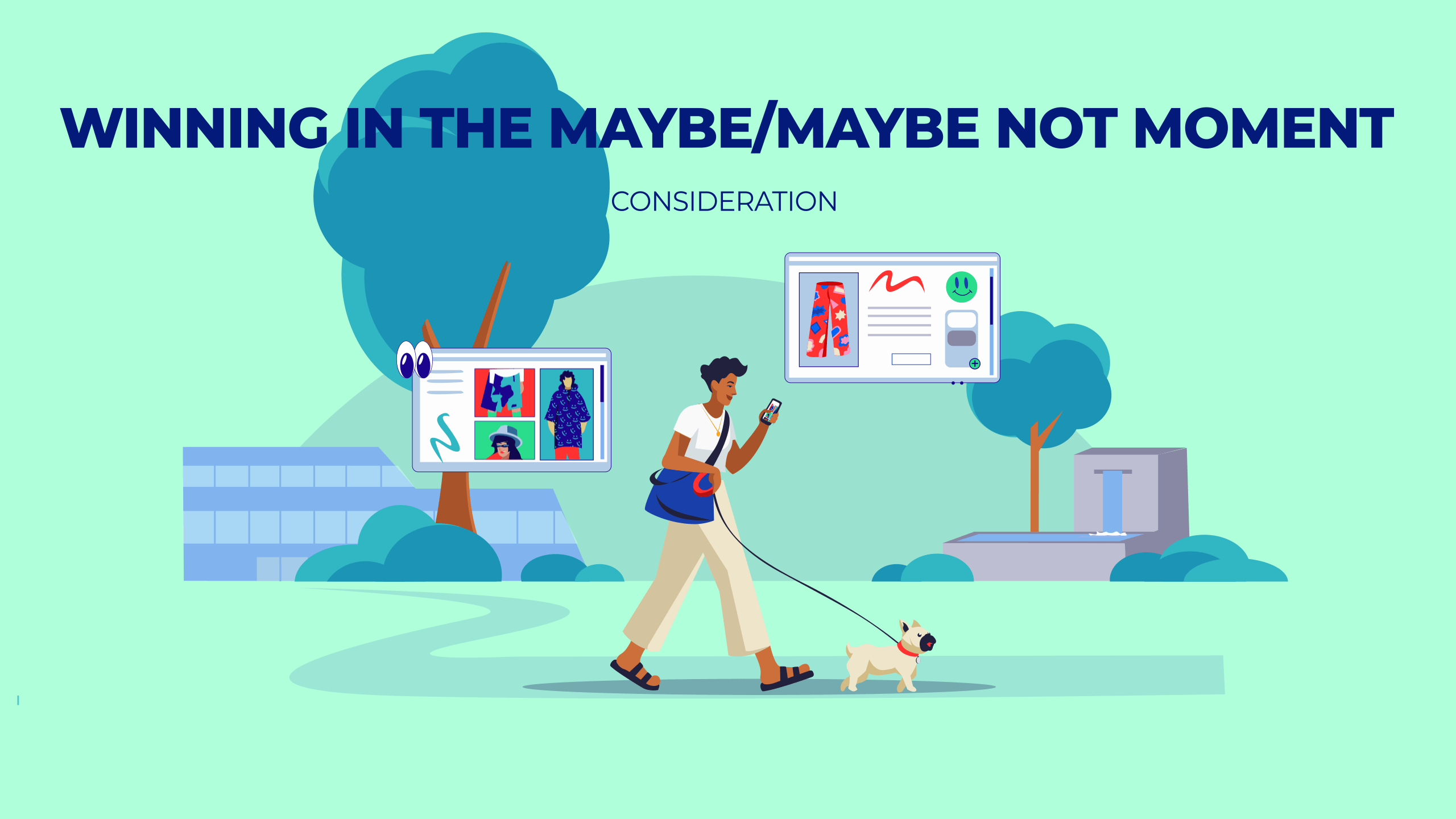
Brands aren’t the only ones tagging along on customer journeys. A 2024 survey from creator management platform GRIN found nearly three-quarters (74%) of consumers made a purchase because an influencer recommended it.
There is no denying that social media creators and influencers have become a part of the modern buyer’s journey. And brands need to show up during these moments to foster the deeper connection that customers want.
Influencing the products people consider, however, can happen through many different channels. Think of this as the consideration phase of the new customer journey, a time when people may have a sense of what they want or need. It’s a time when they turn to trusted sources to give them the confidence they need to make their purchase.
Watching videos and listening to podcasts in their connected homes, checking out livestream events, or digging into product reviews can all sway consumers one way or another. Beyond sharing specs and price points, you need to share content at this stage that makes consumers feel confident you’ll deliver a great experience and that investing with your brand marks the beginning of a valuable relationship.

Focus on the value
you can provide
There’s a reason why the Content Marketing Institute’s data shows 70% of B2C marketers believe content marketing is more important now than ever. All those video tutorials, blog posts, and guides build trust with customers by educating or inspiring them about their interests. Choose creative that tells a relevant story, leaving viewers feeling like your brand deserves their curiosity.
Help customers fully explore
the options you provide
Are customers considering a single product, or are they seeking some kind of benefit that could encompass multiple products and services? Leave no stone unturned by continuing to build awareness even during the consideration phase. For instance, using Sponsored Display or Sponsored Brands to link audiences to specific subcategories in an Amazon store could give customers more to consider and may ignite interest in products they wouldn’t have otherwise considered.
Quantify consideration
through measurement
It’s never been easy for marketers to justify their budgets, but it is now more important than ever for them to understand how their ad spend contributes to the outcomes they need. Part of the challenge may be focusing exclusively on a few metrics. Revenue and profit are important, but they tend to represent the end of the consumer journey. It’s time to begin monitoring and reporting on metrics specific to the consideration phase and learn about how audiences move from one touchpoint along the journey to another. These could be as simple as the number of branded searches a campaign drives, the amount of traffic delivered to a store page, or as granular as the number of page views a product receives or data from an ad partner that compares your consideration percentile to that of your peers.
Brands aren’t the only ones tagging along on customer journeys. A 2024 survey from creator management platform GRIN found nearly three-quarters (74%) of consumers made a purchase because an influencer recommended it.
There is no denying that social media creators and influencers have become a part of the modern buyer’s journey. And brands need to show up during these moments to foster the deeper connection that customers want.
Influencing the products people consider, however, can happen through many different channels. Think of this as the consideration phase of the new customer journey, a time when people may have a sense of what they want or need. It’s a time when they turn to trusted sources to give them the confidence they need to make their purchase.
Watching videos and listening to podcasts in their connected homes, checking out livestream events, or digging into product reviews can all sway consumers one way or another. Beyond sharing specs and price points, you need to share content at this stage that makes consumers feel confident you’ll deliver a great experience and that investing with your brand marks the beginning of a valuable relationship.

Focus on the value
you can provide
There’s a reason why the Content Marketing Institute’s data shows 70% of B2C marketers believe content marketing is more important now than ever. All those video tutorials, blog posts, and guides build trust with customers by educating or inspiring them about their interests. Choose creative that tells a relevant story, leaving viewers feeling like your brand deserves their curiosity.
Help customers fully
explore the options
you provide
Are customers considering a single product, or are they seeking some kind of benefit that could encompass multiple products and services? Leave no stone unturned by continuing to build awareness even during the consideration phase. For instance, using Sponsored Display or Sponsored Brands to link audiences to specific subcategories in an Amazon store could give customers more to consider and may ignite interest in products they wouldn’t have otherwise considered.
Quantify consideration
through measurement
It’s never been easy for marketers to justify their budgets, but it is now more important than ever for them to understand how their ad spend contributes to the outcomes they need. Part of the challenge may be focusing exclusively on a few metrics. Revenue and profit are important, but they tend to represent the end of the consumer journey. It’s time to begin monitoring and reporting on metrics specific to the consideration phase and learn about how audiences move from one touchpoint along the journey to another. These could be as simple as the number of branded searches a campaign drives, the amount of traffic delivered to a store page, or as granular as the number of page views a product receives or data from an ad partner that compares your consideration percentile to that of your peers.
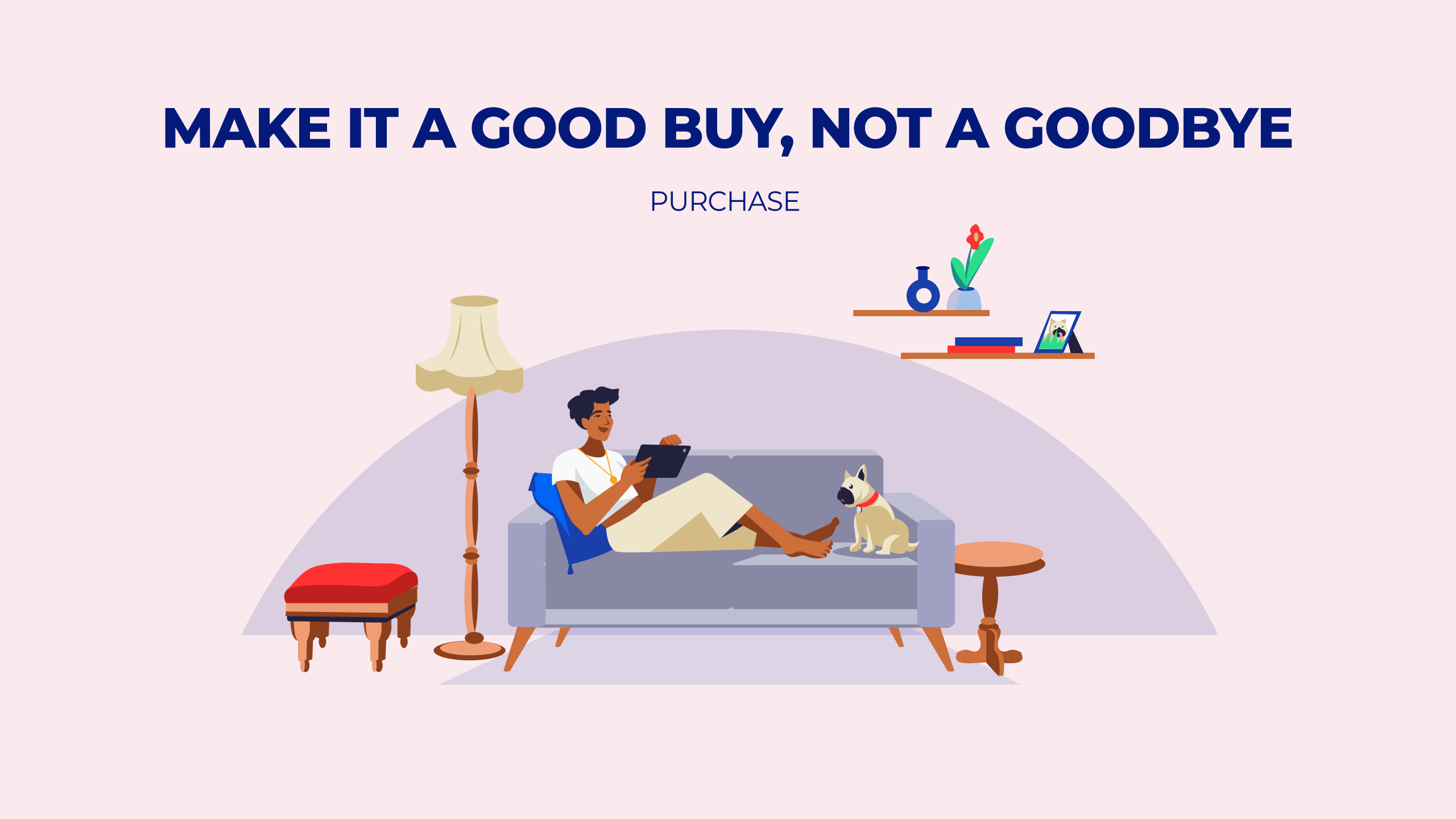
Converting people at the consideration stage into paying customers doesn’t happen automatically. Your marketing may need to create a sense of urgency by offering a special promotion. You may need to provide a clearer message about why your product should win out over the others they’ve researched. It should also be easy to take the next step.
For example, 30% of consumers told software developer Qualtrics that an easy digital experience will define whether they walk away happy or leave with no intention of returning. This means they should be able to double-check shipping information, check out as a guest if ordering online, or be able to use contactless payments when shopping in person. Overall, Discover Network research found 85% of consumers say a negative payment experience makes them less likely to interact with a brand in the future.
If the overall customer experience is strong, the purchase phase could inspire loyalty, positive word of mouth, and an interest in gaining a greater awareness of a brand’s products. It’s also an opportunity to drive consideration of other products.

Offer opportunities for
further discovery
Retailers have long put chocolate bars in the checkout aisle to nudge impulse buyers. You can do even more by using data to promote complementary products, items similar customers have purchased, and products that align with their interests. For example, marketers often work with Amazon’s Sponsored Display Ads to cross-sell with contextually similar product categories or reach audiences that have recently viewed specific products, but haven’t yet made a purchase—further offering an opportunity to make the sale.
Show 'em how
it's done
Video content can be extremely powerful. An analysis of Amazon’s video ads showed that advertisers that used video across multiple touchpoints drove a 73% purchase rate increase. Conversion-oriented videos may showcase a product being unboxed or even show it in action with a demonstration that leads them to say, “I want one!”
A good copilot is worth
their weight in gold
Whether you are a seasoned marketer or a burgeoning student of the ad industry, you have lots of partner options. Make sure you choose one that helps you get smarter with tools that help on your path to success. Amazon’s Sponsored Display ads allow you to optimize for conversions directly, focusing on driving sales from audiences most likely to purchase. You can even set rules on success metrics to control conversion costs and maximize your return on ad spend.
Converting people at the consideration stage into paying customers doesn’t happen automatically. Your marketing may need to create a sense of urgency by offering a special promotion. You may need to provide a clearer message about why your product should win out over the others they’ve researched. It should also be easy to take the next step.
For example, 30% of consumers told software developer Qualtrics that an easy digital experience will define whether they walk away happy or leave with no intention of returning. This means they should be able to double-check shipping information, check out as a guest if ordering online, or be able to use contactless payments when shopping in person. Overall, Discover Network research found 85% of consumers say a negative payment experience makes them less likely to interact with a brand in the future.
If the overall customer experience is strong, the purchase phase could inspire loyalty, positive word of mouth, and an interest in gaining a greater awareness of a brand’s products. It’s also an opportunity to drive consideration of other products.

Offer opportunities for
further discovery
Retailers have long put chocolate bars in the checkout aisle to nudge impulse buyers. You can do even more by using data to promote complementary products, items similar customers have purchased, and products that align with their interests. For example, marketers often work with Amazon’s Sponsored Display Ads to cross-sell with contextually similar product categories or reach audiences that have recently viewed specific products, but haven’t yet made a purchase—further offering an opportunity to make the sale.
Show 'em how
it's done
Video content can be extremely powerful. An analysis of Amazon’s video ads showed that advertisers that used video across multiple touchpoints drove a 73% purchase rate increase. Conversion-oriented videos may showcase a product being unboxed or even show it in action with a demonstration that leads them to say, “I want one!”
A good copilot
is worth their weight
in gold
Whether you are a seasoned marketer or a burgeoning student of the ad industry, you have lots of partner options. Make sure you choose one that helps you get smarter with tools that help on your path to success. Amazon’s Sponsored Display ads allow you to optimize for conversions directly, focusing on driving sales from audiences most likely to purchase. You can even set rules on success metrics to control conversion costs and maximize your return on ad spend.
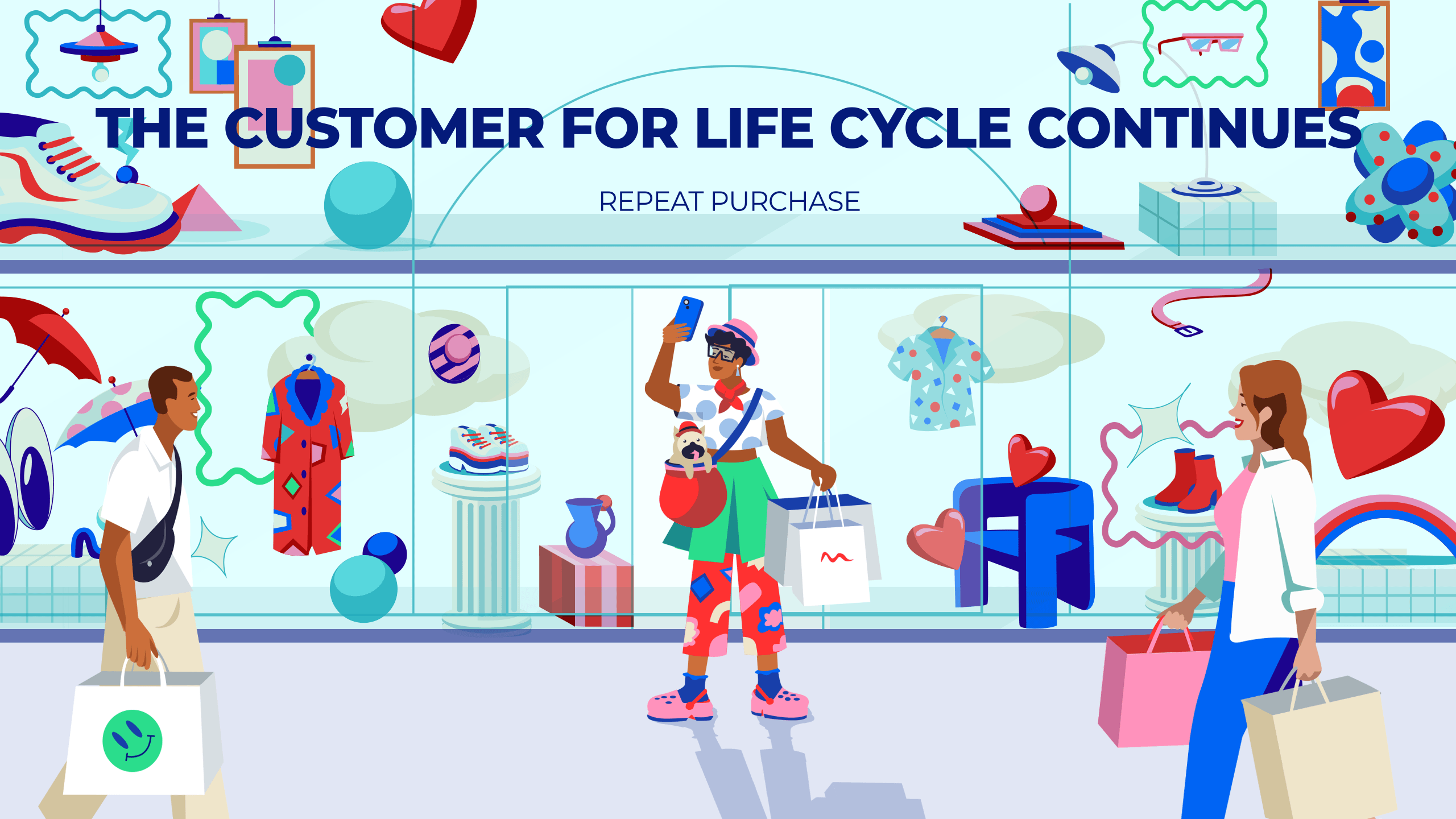
Rather than mapping out the path to purchase with a fixed beginning and end, think of journeys as episodic. And it’s what you do in between episodes that makes customers loyal or not. This probably isn’t news to you: Recent research from customer loyalty agency stratLX found a 2X increase in companies prioritizing retention over acquisition.
This all comes back to how well you collect, manage, and analyze the data customers share with you to better understand their needs and expectations. It’s where you can find additional opportunities to surprise and delight them to reinforce their loyalty.
In fact, repeat purchase links back to every stage of the journey: It makes customers open to deepening brand awareness, more likely to consider a brand, and interested in making additional purchases.
And the benefit of managing this customer data extends far beyond loyalty. Understanding the behavior and preferences of your current customers sets you up to successfully reach and engage with customers like them (lookalikes) using AI and other advanced technology.

Remarket to existing customers
using data as your cornerstone
Some customers may buy the same item over time, but others will be enticed by relevant, contextually aware recommendations for other products and services. Effective cross-promotions put them back into discovery mode and closer to the purchase stage again. Look for trusted third-party adtech to assist you here. Amazon Ads, for example, offers advertisers of all sizes the ability to remarket to audiences via Sponsored Display ads so brands can capture missed sales from people who have visited detail pages for their products or similar ones on Amazon.
Don’t just cultivate customers—
develop a community
Social media accounts aren’t just for promoting your products and offering support. They can also bring like-minded customers together to share ideas and enthusiasm about a brand’s products. The same is true of online forums and other vehicles that host digital communities. This is a way of keeping the conversation going without necessarily leading it. In fact, 80% of consumers believe community is important to fostering brand engagement, and 84% say that the community surrounding a brand directly impacts their feelings about it.
Double down
on analytics
There are many different ways to calculate customer lifetime value. The point is to consistently measure how you could develop better experiences along the nonlinear journeys all your other customers take. You can get a lot of this data by offering services that entice repeat purchases through the convenience of scheduled deliveries, like Amazon’s Subscribe and Save program or by tracking brand store follows as you build traffic to those curated shopping experiences. Taking advantage of Amazon’s billions of shopping signals and joining them with your brand messaging and full-funnel campaign strategy can be a powerful combination to help reach customers along their path to your brand.
Rather than mapping out the path to purchase with a fixed beginning and end, think of journeys as episodic. And it’s what you do in between episodes that makes customers loyal or not. This probably isn’t news to you: Recent research from customer loyalty agency stratLX found a 2X increase in companies prioritizing retention over acquisition.
This all comes back to how well you collect, manage, and analyze the data customers share with you to better understand their needs and expectations. It’s where you can find additional opportunities to surprise and delight them to reinforce their loyalty.
In fact, loyalty links back to every stage of the journey: It makes customers open to deepening brand awareness, more likely to consider a brand, and interested in making additional purchases.
And the benefit of managing this customer data extends far beyond loyalty. Understanding the behavior and preferences of your current customers sets you up to successfully reach and engage with customers like them (lookalikes) using AI and other advanced technology.

Remarket to existing customers using data as your cornerstone
Some customers may buy the same item over time, but others will be enticed by relevant, contextually aware recommendations for other products and services. Effective cross-promotions put them back into discovery mode and closer to the purchase stage again. Look for trusted third-party adtech to assist you here. Amazon Ads, for example, offers advertisers of all sizes the ability to remarket to audiences via Sponsored Display ads so brands can capture missed sales from people who have visited detail pages for their products or similar ones on Amazon.
Don’t just cultivate customers—
develop a community
Social media accounts aren’t just for promoting your products and offering support. They can also bring like-minded customers together to share ideas and enthusiasm about a brand’s products. The same is true of online forums and other vehicles that host digital communities. This is a way of keeping the conversation going without necessarily leading it. In fact, 80% of consumers believe community is important to fostering brand engagement, and 84% say that the community surrounding a brand directly impacts their feelings about it.
Double down
on analytics
There are many different ways to calculate customer lifetime value. The point is to consistently measure how you could develop better experiences along the non-linear journeys all your other customers take. You can get a lot of this data by offering services that entice repeat purchases through the convenience of scheduled deliveries, like Amazon’s Subscribe and Save program or by tracking brand store follows as you build traffic to those curated shopping experiences. Taking advantage of Amazon’s billions of shopping signals and joining them with your brand messaging and full-funnel campaign strategy can be a powerful combination to help reach customers along their path to your brand.
About AmazonAds
Amazon Ads helps brands design ad experiences that delight customers and deliver meaningful business results. With 300 million global active customer accounts and first-party insights into shopping, streaming, and browsing, brands can craft relevant campaigns that enhance the customer experience. Its solutions on Amazon.com; services like Twitch, IMDb TV, Alexa, and Amazon Music; and partnerships with third-party publishers and exchanges make Amazon Ads the ultimate amplifier for brands to reach the right audiences in the right places—both on and off Amazon.
Illustrations by Jack Hudson


About AmazonAds
Amazon Ads helps brands design ad experiences that delight customers and deliver meaningful business results. With 300 million global active customer accounts and first-party insights into shopping, streaming, and browsing, brands can craft relevant campaigns that enhance the customer experience. Its solutions on Amazon.com; services like Twitch, IMDb TV, Alexa, and Amazon Music; and partnerships with third-party publishers and exchanges make Amazon Ads the ultimate amplifier for brands to reach the right audiences in the right places—both on and off Amazon.
Illustrations by Jack Hudson


 Built with Shorthand
Built with Shorthand





